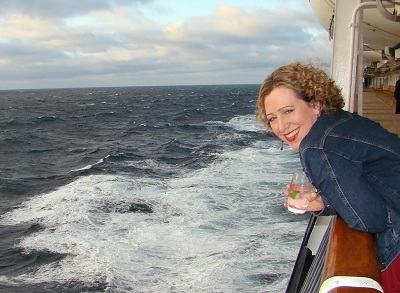For me, the when and where is as important as the who and what. In fiction the actual setting (geography) and the ephemeral setting (historical moment in time) tell the story alongside the who (character) and the what (plot). The location is another character, as important as the ensemble I've created to live the story; it could be the future, a real city or a made-up one, 18th century France or modern-day Liverpool, a mythical land or a virtual reality. But wherever I choose I let it come to life and breathe the same air as my characters.

The ephemeral setting (time) can be about more than merely which year or century a novel takes place in, but also how fast that time passes. Is it an epic work covering a hundred years or a story exploring just a week in a character’s life? Some literature hones in on a brief moment - like Ian McEwan’s Saturday - while other books tell a sweeping, lengthy tale, such as Colleen McCullough’s The Thorn Birds. Whatever physical setting I've chosen I tend to zoom in closely on my timeline, preferring bite-sized portions of days or weeks rather than years.
In my debut novel, How to be Brave, this is the case. In it there are two very opposite main settings – a book nook in a modern-day family home and a lifeboat adrift on the Atlantic Ocean during the Second World War. Factual events inspired this story (my grandfather’s sea survival and my daughter’s illness) so really I had little choice in these places, but their diversity gave me so much to work with, so many gorgeous themes and elements to use and explore.
The book nook setting I knew. I had been there. The lifeboat setting I had to research and imagine. Oh, but the sea gave me plenty. She is most certainly another character as starving shipwrecked men aboard a lifeboat drift on her for endless days. Her currents and colours are the perfect backdrop, complementing scenes, reflecting characters’ moods, mirroring fights. Her vastness amplifies the solitude of those there, which is a major theme in the book - a mother and daughter struggle alone to cope with childhood illness in the modern-day book nook setting. The sea's mere existence when the crew have nothing to drink tortures them endlessly.
I always let my setting enhance themes and provide added drama. Just think of the cliché haunted houses in horror stories and deserted metallic spaceships in sci-fi novels - they work. Would Stephen King’s The Shining have worked anywhere but the vast Overlook hotel? How many books do we recall mostly because of where they took place? Think Life of Pi, Gone with the Wind, The Kite Runner, Wuthering Heights, The Book Thief, American Psycho.
In my second novel, The Mountain in my Shoe, I wanted to again isolate my main character Bernadette, to reflect her being stuck in a marriage she couldn't escape, and so I drew on memories of a huge Victorian building I briefly lived in as a child. My mum had moved into it as a single woman after her divorce. It was damp and dilapidated and always cold because of the nearby river; it was surrounded by overgrown lawns and wood, and home to five run-down council flats. At night I hid beneath the covers to ignore the haunting sound of the foghorn and branches creaking and nearby dog howling. I was sure we were the only people in the world. And I knew this place was where my Bernadette should live, so I renamed it Tower Rise and brought it to life.
Water again provided an important landscape; it trickles into most of my writing. The Mountain in my Shoe’s Bernadette, like myself, has always lived on the River Humber - one of the most dangerous estuaries in the world - and whichever way she journeys from Tower Rise, east or west, she tracks this tumultuous water, culminating in a scene on the marina where a character falls in. My next novel, currently in progress, is set in a crisis centre during the 2007 floods in Hull. The rain washing away all that they hold dear mirrors the truths and tragedies of the Flood Crisis callers’ stories. Main character Katrina must rebuild more than just her home when she volunteers there.
Kurt Vonnegut said of writing, “It’s like making a movie: all sorts of accidental things will happen after you've set up the cameras.” Sometimes I think if the setting comes to us first, a story will naturally form, and then the backdrop supports and carries the characters, much like a lifeboat taking those shipwrecked to safety.
Do I prefer to create from memory, to revisit localities I've really been to? Yes, perhaps because it is the easiest and the most natural place to describe. But then I plan one day on a novel set in Africa, where I've never been, and one maybe set aboard a ship, historical era not yet decided. But if I can imagine I'm really there - and I know I will - all I have to do is make sure I take my readers with me too.
How to be Brave (Orenda Books) is currently out on Kindle, in paperback and as an audiobook. The Mountain in my Shoe will be released in September 2016.
Comments